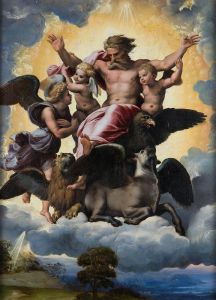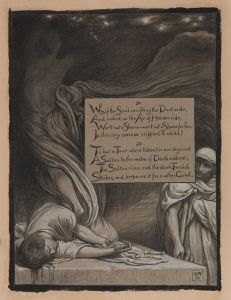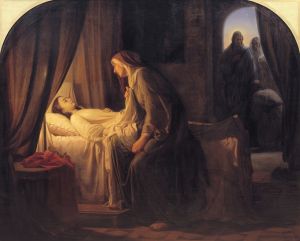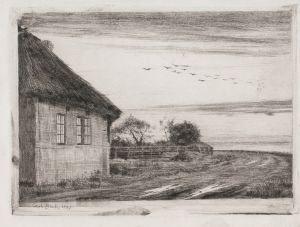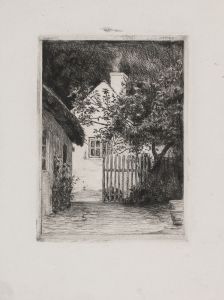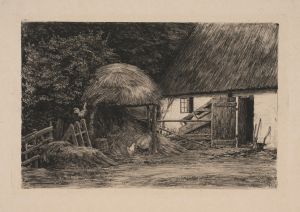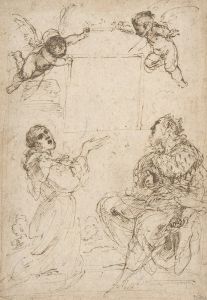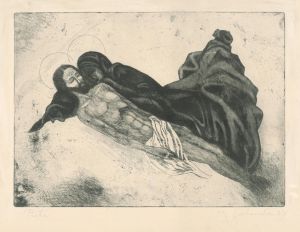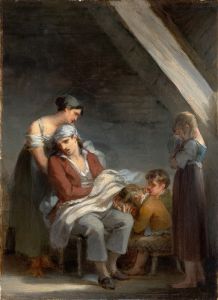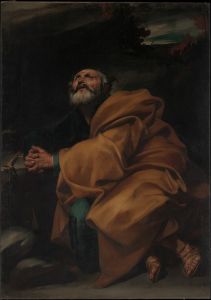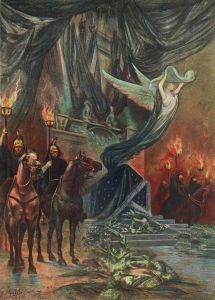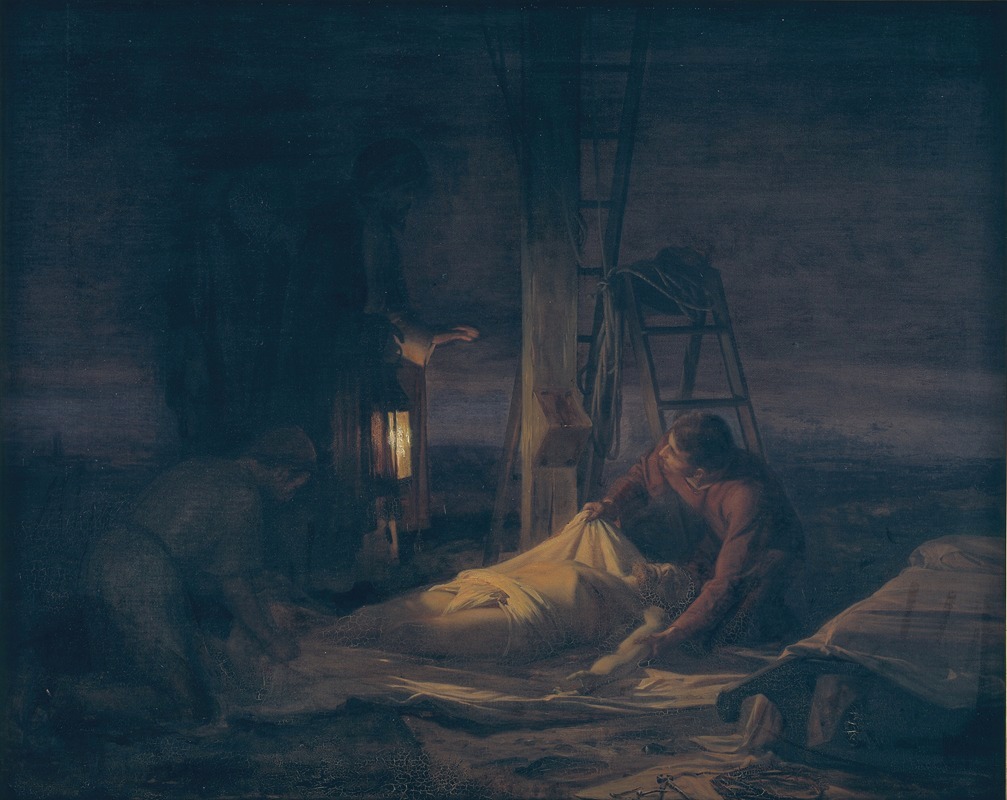
Descent from the Cross
A hand-painted replica of Carl Bloch’s masterpiece Descent from the Cross, meticulously crafted by professional artists to capture the true essence of the original. Each piece is created with museum-quality canvas and rare mineral pigments, carefully painted by experienced artists with delicate brushstrokes and rich, layered colors to perfectly recreate the texture of the original artwork. Unlike machine-printed reproductions, this hand-painted version brings the painting to life, infused with the artist’s emotions and skill in every stroke. Whether for personal collection or home decoration, it instantly elevates the artistic atmosphere of any space.
Carl Bloch's "Descent from the Cross" is a notable painting by the Danish artist, who is renowned for his religious and historical works. Bloch, born in 1834 and passing in 1890, was a prominent figure in the Danish art scene and is often celebrated for his ability to convey deep emotion and narrative through his paintings. His works are characterized by their dramatic use of light and shadow, as well as their detailed and realistic portrayal of biblical scenes.
"Descent from the Cross" is one of Bloch's many religious paintings, a subject he frequently explored throughout his career. This particular work depicts the poignant moment of Jesus Christ being taken down from the cross following his crucifixion, a scene that has been a popular subject in Christian art for centuries. The painting captures the somber and mournful atmosphere of the event, focusing on the figures involved in the descent, including Joseph of Arimathea, Nicodemus, and the Virgin Mary, among others.
Bloch's interpretation of this scene is marked by his meticulous attention to detail and his ability to convey the emotional gravity of the moment. The composition is carefully arranged to draw the viewer's eye to the central figure of Christ, whose lifeless body is being gently lowered from the cross. The expressions of the surrounding figures are rendered with great sensitivity, each face reflecting a range of emotions from grief to reverence.
The use of light in "Descent from the Cross" is particularly noteworthy. Bloch employs a dramatic chiaroscuro technique, using stark contrasts between light and dark to highlight the central figures and create a sense of depth and volume. This technique not only enhances the emotional impact of the scene but also serves to guide the viewer's attention to the key elements of the composition.
Bloch's work is often compared to that of the Old Masters, and "Descent from the Cross" is no exception. His ability to blend realism with a heightened sense of drama and emotion places him in the tradition of artists like Rembrandt and Caravaggio, who also excelled in depicting biblical narratives with a profound sense of humanity and pathos.
The painting is part of a larger series of works by Bloch that depict the life of Christ, many of which were commissioned for the King's Chapel at Frederiksborg Castle in Denmark. These works have played a significant role in cementing Bloch's reputation as one of the foremost painters of religious subjects in the 19th century.
Today, Carl Bloch's "Descent from the Cross" continues to be admired for its artistic merit and its powerful portrayal of a pivotal moment in Christian theology. The painting remains an important example of Bloch's skill as a painter and his deep engagement with religious themes, reflecting both his technical prowess and his ability to convey profound spiritual and emotional truths through art.





